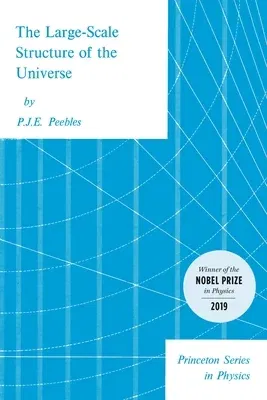P J E Peebles
(Author)The Large-Scale Structure of the UniversePaperback, 21 November 1980

Qty
1
Turbo
Ships in 2 - 3 days
In Stock
Free Delivery
Cash on Delivery
15 Days
Free Returns
Secure Checkout

Part of Series
Princeton Physics
Part of Series
Princeton Series in Physics
Print Length
440 pages
Language
English
Publisher
Princeton University Press
Date Published
21 Nov 1980
ISBN-10
0691082405
ISBN-13
9780691082400
Description
Product Details
Author:
Book Format:
Paperback
Country of Origin:
US
Date Published:
21 November 1980
Dimensions:
22.81 x
15.9 x
2.72 cm
ISBN-10:
0691082405
ISBN-13:
9780691082400
Language:
English
Location:
Princeton
Pages:
440
Publisher:
Weight:
644.1 gm